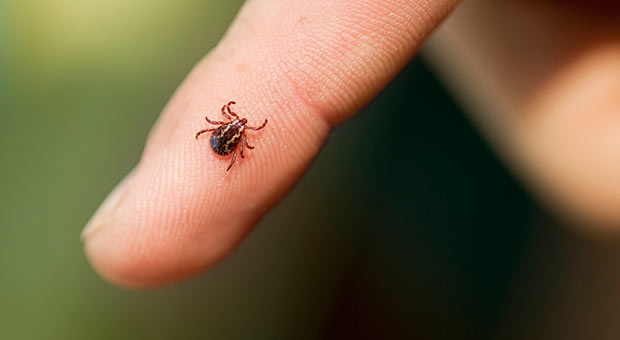It feels so good to be outside enjoying the summer, doesn’t it?! While you’re walking through the park after dinner, or out playing with the kids in the yard this season, just make sure you’re always on the lookout for ticks in the yard. And for the mosquitoes out there, keep bug spray in your purse or car if you’re out and about and make sure you keep yourself and kids protected.
“Certain species of ticks are capable of transmitting serious diseases to humans when they bite, including Lyme disease, babesiosis and Rocky Mountain spotted fever,” said Steve Sutton, Service Manager for Franklin Pest Solutions Hammond. “We encourage people to take steps to protect themselves and their pets from ticks when outdoors this summer and decrease the chances of contracting one of these tick-borne illnesses.”
Tick Prevention
According to the National Pest Management Association (NPMA), a nonprofit organization committed to the protection of public health, food and property from household pests, the most effective ways to prevent a tick encounter include:
- Landscape your yard. Keep grass cut low and remove weeds, woodpiles and debris. Ticks are found in high grass, and yards with shrubbery.
- Protect your skin. Wear long pants, long-sleeved shirts and closed-toe shoes when outdoors, especially in wooded areas or tall grasses. Choose light colored clothing that makes it easier to spot ticks and other insects.
- Use an effective bug repellant. Always apply an insect repellant containing at least 20% DEET to protect against ticks when spending time outdoors, and reapply as directed on the label.
- Regularly check for ticks. Most ticks require 24-48 hours of feeding before they can successfully transmit infections, so it’s crucial to perform a thorough tick check immediately after spending time outdoors. Be sure to check all areas of the body, including the hair.
- Don’t forget about pets. Check pets frequently for ticks, especially after the animal has been outside. Consult with a veterinarian about prevention and treatment options available to pets and wash pet bedding and toys frequently.
- Brush up on proper removal techniques.Use fine-tipped tweezers to remove a tick, using a slow, steady pulling motion. Wash hands and the bite site thoroughly with soap and water, and flush the tick down a toilet or wrap it in tissue before disposing in a closed receptacle.
- Contact a professional. Anyone suspecting a tick bite or experiencing symptoms, including a skin rash, joint pain or fever, should seek prompt medical attention. If ticks are a problem on your property, contact a licensed pest professional to inspect and implement a treatment plan to reduce tick populations.
If you find ticks in your yard, give us a call! We can help! Our mosquito services are quite effective with ticks in the yard as well!
{{cta(‘af1d314f-fec3-4553-9e9a-d7d8dcfd14d1’)}}



